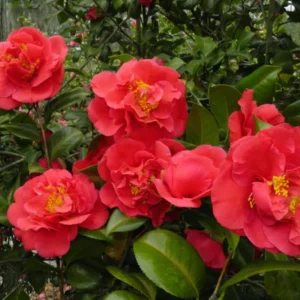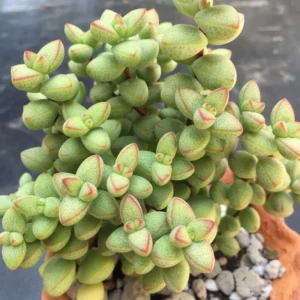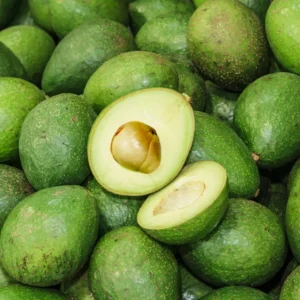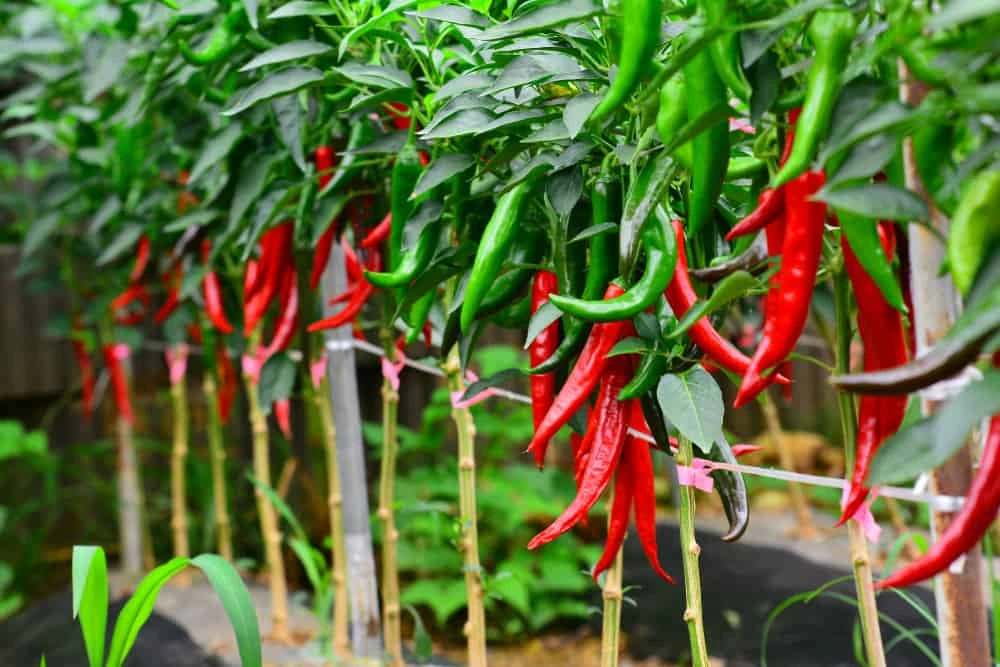-
×
 Red Camellia Japonica Plant - Live 4" Pot - Fragrant Flowering Shrub
$24.99
Red Camellia Japonica Plant - Live 4" Pot - Fragrant Flowering Shrub
$24.99 -
×
 Adenium Obesum Desert Rose Plant, Adenium Plant For Planting, Live Desert Rose Plant With Flower, Potted Plant
$59.89
Adenium Obesum Desert Rose Plant, Adenium Plant For Planting, Live Desert Rose Plant With Flower, Potted Plant
$59.89 -
×
 Aeonium Succulent Plant - 3 to 5 Inch Tall- Aeonium Plant for Pots, Container, Garden Displays, Easy-to-Grow Ornamental Succulent - Pink Witch
$29.88
Aeonium Succulent Plant - 3 to 5 Inch Tall- Aeonium Plant for Pots, Container, Garden Displays, Easy-to-Grow Ornamental Succulent - Pink Witch
$29.88 -
×
 Pink Bougainvillea Starter Plant - Live Bougainvillea Vine - 3-5 Inch Pink Flower Plant
$24.77
Pink Bougainvillea Starter Plant - Live Bougainvillea Vine - 3-5 Inch Pink Flower Plant
$24.77 -
×
 Jasmine Live Plants, 2 Yellow Jasmine Plants Live, From 4 Inches to 6 Inches Tall Seedling, Yellow Flower Plants
$29.19
Jasmine Live Plants, 2 Yellow Jasmine Plants Live, From 4 Inches to 6 Inches Tall Seedling, Yellow Flower Plants
$29.19 -
×
 Crassula Succulent Live Plant, Easy to Grow - Unique Variety in a 4-Inch Pot, Ideal for Indoor or Outdoor Decor - Crassula Brevifolia
$19.88
Crassula Succulent Live Plant, Easy to Grow - Unique Variety in a 4-Inch Pot, Ideal for Indoor or Outdoor Decor - Crassula Brevifolia
$19.88 -
×
 Hass Grafted Avocado Tree Live Plant, 1.5-3 Ft Tall, Avocado Tree for Outdoor Planting
$129.99
Hass Grafted Avocado Tree Live Plant, 1.5-3 Ft Tall, Avocado Tree for Outdoor Planting
$129.99 -
×
 Scuppernong Grape Vines - 1-2 Year Old Muscadine Grape Plant for Planting
$58.99
Scuppernong Grape Vines - 1-2 Year Old Muscadine Grape Plant for Planting
$58.99 -
×
 Blood Orange Tree Live Plant, Grafted Citrus, 2 Feet Tall in 1 Gallon Pot for Full Sun
$259.98
Blood Orange Tree Live Plant, Grafted Citrus, 2 Feet Tall in 1 Gallon Pot for Full Sun
$259.98 -
×
 Set 2 White Dogwood Tree Bare Roots, 8 to 16 Inc Tall, Dormant in Winter, No Leaf, Dogwood Trees Plants Live
$31.99
Set 2 White Dogwood Tree Bare Roots, 8 to 16 Inc Tall, Dormant in Winter, No Leaf, Dogwood Trees Plants Live
$31.99 -
×
 5 Leyland Cypress Tree in 2.5" Pot, Fresh Privacy Screen Tree Fast Growing Landscaping Hedge Plant
$49.99
5 Leyland Cypress Tree in 2.5" Pot, Fresh Privacy Screen Tree Fast Growing Landscaping Hedge Plant
$49.99 -
×
 Set of 3 Lemon Balm Plants Live, Mint Herb Seedlings 4-6" Tall Well Rooted
$19.49
Set of 3 Lemon Balm Plants Live, Mint Herb Seedlings 4-6" Tall Well Rooted
$19.49 -
×
 Pink Rose Climbing Live Starter Plant, Fragrant New Dawn Pink Climbing Rose for Planting Outdoor, No Pot, 1 Year Old Rose Plant, Well-Rooted Rose Plants Live Ready to Plant
$37.99
Pink Rose Climbing Live Starter Plant, Fragrant New Dawn Pink Climbing Rose for Planting Outdoor, No Pot, 1 Year Old Rose Plant, Well-Rooted Rose Plants Live Ready to Plant
$37.99 -
×
 10 Virginia Creeper Vines Live Plants - Fast Growing Ground Cover Climbing Ivy Bareroots
$21.99
10 Virginia Creeper Vines Live Plants - Fast Growing Ground Cover Climbing Ivy Bareroots
$21.99 -
×
 Large Valencia Orange Tree Live Plant 2 To 3 Feet Tall, Valencia Orange Fruit Tree Live, Valencia Orange Outdoor Potted Tree No Ship To CA, HI, PR, GU, AK
$126.99
Large Valencia Orange Tree Live Plant 2 To 3 Feet Tall, Valencia Orange Fruit Tree Live, Valencia Orange Outdoor Potted Tree No Ship To CA, HI, PR, GU, AK
$126.99 -
×
 Aeonium Succulent Plant - 3 to 5 Inch Tall- Aeonium Plant for Pots, Container, Garden Displays, Easy-to-Grow Ornamental Succulent- Aeonium Peacock Feather
$29.88
Aeonium Succulent Plant - 3 to 5 Inch Tall- Aeonium Plant for Pots, Container, Garden Displays, Easy-to-Grow Ornamental Succulent- Aeonium Peacock Feather
$29.88 -
×
 Pack 3 Moringa Trees, Moringa Plants Live, Moringa Oleifera Plants, 8-10 Inc Tall Malunggay Plant for Growing, Drumstick Tree, Horseradish Tree, Moringa Seedling
$29.99
Pack 3 Moringa Trees, Moringa Plants Live, Moringa Oleifera Plants, 8-10 Inc Tall Malunggay Plant for Growing, Drumstick Tree, Horseradish Tree, Moringa Seedling
$29.99 -
×
 Awapuhi Shampoo Ginger Plant Live, 5-9 Inch Tall, Zingiber Zerumbet Pinecone Ginger Seedling
$24.99
Awapuhi Shampoo Ginger Plant Live, 5-9 Inch Tall, Zingiber Zerumbet Pinecone Ginger Seedling
$24.99 -
×
 Kalanchoe Pink Butterfly, Variegated Succulent Plant Live, Rare Succulent Houseplant For Decoration, In 2 Inch Pot
$27.99
Kalanchoe Pink Butterfly, Variegated Succulent Plant Live, Rare Succulent Houseplant For Decoration, In 2 Inch Pot
$27.99 -
×
 Red Amaryllis Bulbs for Planting Indoor Outdoor, Live Amaryllis Flower Bulbs 1 Bulb
$29.96
Red Amaryllis Bulbs for Planting Indoor Outdoor, Live Amaryllis Flower Bulbs 1 Bulb
$29.96 -
×
 Plectranthus Vick Tomentosa Succulent Plant Live, In 4 Inch Pot For Indoor Outdoor Plant
$19.99
Plectranthus Vick Tomentosa Succulent Plant Live, In 4 Inch Pot For Indoor Outdoor Plant
$19.99
Guide
How to Grow Chili Peppers
Growing chili peppers is an annual hobby millions of people worldwide enjoy. It seems like most people these days have a few chili pepper plants at home—it’s become a trend, partly because growing chili peppers at home can be both rewarding and flavorful, and they’re so easy to grow. Learn how to grow the freshest, tastiest peppers at home and save both time and money! Our guide will walk you through the essentials of cultivating chili peppers from seed to harvest, ensuring a bumper crop every season.
About Chili Peppers
Chili peppers (Capsicum annuum) are a staple in many kitchens worldwide due to their fiery flavor and vibrant colors. Their versatility makes them a popular choice for home gardens. They thrive in warm climates and offer a range of sizes, colors, and heat levels.
Key Features
-
Scientific Name: Capsicum annuum
-
Mature Size: 1 to 4 feet tall, depending on the variety.
-
Time to ultimate height: 6 months
-
Zones: USDA Hardiness Zones 9-11 (can be grown as an annual in cooler climates)
-
Expected Planting Period: Early spring after the last frost.
-
Days to Maturity: 60-150 days, depending on the variety.
-
Growth Rate: Moderate
-
Blooming Time: Summer
-
Attributes: Vary in size and color, ranging from sweet to extremely spicy.
Varieties of Chili Peppers
There are plenty of options out there. You can grow mild peppers, spicy ones, or even super-hot varieties – there are so many types of peppers you can grow at home. You have way more choices than what you typically find at grocery stores regarding shapes, colors, and flavors.
There are hundreds of chili pepper varieties, each differing in heat and flavor. Some popular ones include:
-
Jalapeño: Medium heat, great for salsa.
-
Habanero: Extremely hot, perfect for hot sauces.
-
Cayenne: Spicy, ideal for drying and powdering.
-
Bell Peppers: Mild, excellent for salads and stir-fries.
Note: The hotter one you choose, the longer the whole growing process will take (from germination through to ripening), so bear this in mind when selecting your preferred type.
Should I plant by Seeds or Seedlings?
-
Seeds: Starting from seeds gives you control over the variety and ensures a larger selection. They may take longer to mature but are cost-effective.
-
Seedlings: If you’re short on time, seedlings are a quicker way to get started and are often more resistant to early pests and diseases.
For a beginner like you, starting with seedlings might be a bit easier since they’re already established and reduce the risk of seed germination problems.
However, growing from seeds can be more rewarding if you’re patient!
Planting Chili Peppers
When to Plant
Growing chili peppers is similar to growing peppers. All peppers thrive best in warm soil when the surrounding temperature stays above 50°F (10°C). Exposure to cooler temperatures can inhibit flowering and disrupt the proper symmetry of the fruit.

Chili peppers will thrive in warm weather. The best time to plant chili peppers outdoors is usually in late spring to early summer, once the soil has warmed up and all danger of frost has passed. Ideally, when daytime temperatures are between 70-85°F (21-29°C), and nights stay above 55°F (13°C), your peppers will thrive.
Where to Plant
Chili peppers love sun and warmth, so the best place to plant them is in a spot that gets full sun—ideally 6 to 8 hours of direct sunlight per day. They also need well-drained soil with a pH between 6.0 and 6.8 to avoid root rot, so pick a spot with good drainage.
Avoid planting them in low-lying areas where water can accumulate, as soggy soil can lead to root rot.
If your soil is heavy, you can amend it with compost to improve the texture.
Learn 3 essential tips for soil preparation here.
How to Plant Chili Peppers
If You’re Starting from Seeds:

-
Choose a variety suited to your climate and preferences (hot or mild peppers). Make sure seeds are fresh for better germination rates.
-
Plant seeds ¼ inch deep in a seed-starting mix in trays or small pots. Ensure the mix is light and airy to allow for good drainage.
-
Peppers need warmth to germinate, so keep the trays in a warm area (70-85°F). A heat mat under the trays can help.
-
Keep the soil lightly moist but not soggy. Use a spray bottle to avoid washing the seeds out.
-
Once the seeds sprout (usually 7–14 days), they’ll need strong light. Place them in a sunny spot or under grow lights for 14-16 hours a day. Rotate the trays if they’re growing toward the light source.
-
Transplanting Outdoors:
-
Hardening Off: About 1-2 weeks before transplanting, start taking your seedlings outside for a few hours each day, gradually increasing their time outside to harden them off.
-
Planting: Once nighttime temperatures stay above 55°F, transplant them outdoors. Plant them about 18-24 inches apart in full sun, burying the root ball at the same depth it was in the tray.
-
Watering: Water thoroughly after transplanting and keep the soil evenly moist.
-
If You’re Starting with Seedlings:
-
When buying seedlings, look for healthy plants with bright green leaves. Avoid leggy or yellowing plants.
-
Pick a sunny spot where the plants will get 6-8 hours of sunlight per day.
-
Work compost or organic matter into the soil to improve fertility and drainage. Peppers prefer slightly acidic soil (pH 6.0-7.0), so test and adjust if needed.
-
Space seedlings 18-24 inches apart. Chili peppers like air circulation, so don’t crowd them.
-
Dig a hole just deep enough to plant them at the same depth they were growing in their pots. Water immediately after planting to help the plants settle in. If you’re growing peppers in pots, make sure the containers have drainage holes at the bottom and are filled with a high-quality potting mix designed for growing vegetables.
Growing Chili Peppers
Fertilization
Chili peppers benefit from regular feeding.
About 2-3 weeks after transplanting, apply a balanced fertilizer (like 10-10-10) or one slightly higher in phosphorus (the middle number) to promote healthy root and fruit development. Avoid overfertilizing with nitrogen (first number), as it can cause too much leafy growth and fewer peppers.
Once peppers start flowering, switch to a fertilizer with more potassium (the last number) to support fruit production. A good option is compost tea, liquid seaweed, or a specific tomato and pepper fertilizer.
Feed your peppers every 3-4 weeks during the growing season, especially if you’re growing in containers, where nutrients leach out faster.
Watering and Soil
Water chili peppers deeply but infrequently, allowing the soil to dry out slightly between waterings. Overwatering can lead to diseases like root rot. Mulch around the base of the plant to retain moisture and regulate soil temperature.
Keep the soil moist but not waterlogged, especially during flowering and fruiting.
Pests and Diseases
Common pests include aphids, spider mites, and whiteflies. Use insecticidal soap or neem oil to combat infestations. Diseases such as powdery mildew, bacterial leaf spot, and fusarium wilt can affect chili peppers. Ensure good air circulation, and avoid overwatering to prevent these issues.
Growing in Pots or Garden Beds
Chili peppers grow well in containers if you have limited garden space. Choose pots at least 12 inches in diameter with good drainage. Garden beds are ideal for larger harvests, but both methods can yield great results with the right care.
Harvesting and Storing Chili Peppers
Harvesting Chili Peppers
Chili peppers can be harvested while they’re still green, but their flavor becomes much richer if you allow them to fully ripen on the plant. Depending on the variety, they’ll turn red, yellow, orange, or even purple when mature.
For a spicier flavor, leaving them on the plant a bit longer will do the trick.
Chili peppers reach their full size and color when fully ripe. If you prefer a milder flavor, pick them while they’re still green. To get a spicier taste, let them ripen to their final color before harvesting.
Use sharp scissors or pruning shears to cut the peppers from the plant, leaving a small part of the stem attached. This prevents damage to the plant and encourages more fruit production.
Storage Options
-
Fresh Peppers: Store in the refrigerator for up to 2 weeks.
-
Dried Peppers: String them up to dry, or use a dehydrator. Dried peppers can be stored in airtight containers for months.
-
Freezing: Chop peppers and freeze them for later use.
Tips and Tricks
-
Prune the top of the plant when it’s about a foot tall to encourage bushier growth and more fruit production.
-
Grow chili peppers alongside basil, marigolds, and onions to repel pests and enhance growth.
-
Removing early flowers allows the plant to put more energy into growing stronger roots and stems, leading to better yields later.
FAQs
-
How much sunlight do chili peppers need?
Chili peppers need at least 6-8 hours of direct sunlight daily. -
Can I grow chili peppers in pots?
Yes! Chili peppers grow well in pots, provided they have good drainage and enough sunlight. -
How long does it take to harvest chili peppers?
Depending on the variety, it can take between 60 and 150 days to harvest chili peppers after planting. -
How often should I water chili peppers?
Water deeply about once a week, allowing the soil to dry slightly between waterings. -
What’s the best way to store harvested chili peppers?
Fresh peppers can be refrigerated for up to two weeks, while dried peppers can last for months in airtight containers.
Ready to grow your chili peppers? Explore our range of high-quality gardening products and tools to take your garden to the next level. Shop now

 Adenium Obesum Desert Rose Plant, Adenium Plant For Planting, Live Desert Rose Plant With Flower, Potted Plant
Adenium Obesum Desert Rose Plant, Adenium Plant For Planting, Live Desert Rose Plant With Flower, Potted Plant  Aeonium Succulent Plant - 3 to 5 Inch Tall- Aeonium Plant for Pots, Container, Garden Displays, Easy-to-Grow Ornamental Succulent - Pink Witch
Aeonium Succulent Plant - 3 to 5 Inch Tall- Aeonium Plant for Pots, Container, Garden Displays, Easy-to-Grow Ornamental Succulent - Pink Witch  Pink Bougainvillea Starter Plant - Live Bougainvillea Vine - 3-5 Inch Pink Flower Plant
Pink Bougainvillea Starter Plant - Live Bougainvillea Vine - 3-5 Inch Pink Flower Plant  Jasmine Live Plants, 2 Yellow Jasmine Plants Live, From 4 Inches to 6 Inches Tall Seedling, Yellow Flower Plants
Jasmine Live Plants, 2 Yellow Jasmine Plants Live, From 4 Inches to 6 Inches Tall Seedling, Yellow Flower Plants  Crassula Succulent Live Plant, Easy to Grow - Unique Variety in a 4-Inch Pot, Ideal for Indoor or Outdoor Decor - Crassula Brevifolia
Crassula Succulent Live Plant, Easy to Grow - Unique Variety in a 4-Inch Pot, Ideal for Indoor or Outdoor Decor - Crassula Brevifolia  Hass Grafted Avocado Tree Live Plant, 1.5-3 Ft Tall, Avocado Tree for Outdoor Planting
Hass Grafted Avocado Tree Live Plant, 1.5-3 Ft Tall, Avocado Tree for Outdoor Planting  Scuppernong Grape Vines - 1-2 Year Old Muscadine Grape Plant for Planting
Scuppernong Grape Vines - 1-2 Year Old Muscadine Grape Plant for Planting  Blood Orange Tree Live Plant, Grafted Citrus, 2 Feet Tall in 1 Gallon Pot for Full Sun
Blood Orange Tree Live Plant, Grafted Citrus, 2 Feet Tall in 1 Gallon Pot for Full Sun  Set 2 White Dogwood Tree Bare Roots, 8 to 16 Inc Tall, Dormant in Winter, No Leaf, Dogwood Trees Plants Live
Set 2 White Dogwood Tree Bare Roots, 8 to 16 Inc Tall, Dormant in Winter, No Leaf, Dogwood Trees Plants Live  5 Leyland Cypress Tree in 2.5" Pot, Fresh Privacy Screen Tree Fast Growing Landscaping Hedge Plant
5 Leyland Cypress Tree in 2.5" Pot, Fresh Privacy Screen Tree Fast Growing Landscaping Hedge Plant  Set of 3 Lemon Balm Plants Live, Mint Herb Seedlings 4-6" Tall Well Rooted
Set of 3 Lemon Balm Plants Live, Mint Herb Seedlings 4-6" Tall Well Rooted  Pink Rose Climbing Live Starter Plant, Fragrant New Dawn Pink Climbing Rose for Planting Outdoor, No Pot, 1 Year Old Rose Plant, Well-Rooted Rose Plants Live Ready to Plant
Pink Rose Climbing Live Starter Plant, Fragrant New Dawn Pink Climbing Rose for Planting Outdoor, No Pot, 1 Year Old Rose Plant, Well-Rooted Rose Plants Live Ready to Plant  10 Virginia Creeper Vines Live Plants - Fast Growing Ground Cover Climbing Ivy Bareroots
10 Virginia Creeper Vines Live Plants - Fast Growing Ground Cover Climbing Ivy Bareroots  Large Valencia Orange Tree Live Plant 2 To 3 Feet Tall, Valencia Orange Fruit Tree Live, Valencia Orange Outdoor Potted Tree No Ship To CA, HI, PR, GU, AK
Large Valencia Orange Tree Live Plant 2 To 3 Feet Tall, Valencia Orange Fruit Tree Live, Valencia Orange Outdoor Potted Tree No Ship To CA, HI, PR, GU, AK  Aeonium Succulent Plant - 3 to 5 Inch Tall- Aeonium Plant for Pots, Container, Garden Displays, Easy-to-Grow Ornamental Succulent- Aeonium Peacock Feather
Aeonium Succulent Plant - 3 to 5 Inch Tall- Aeonium Plant for Pots, Container, Garden Displays, Easy-to-Grow Ornamental Succulent- Aeonium Peacock Feather  Pack 3 Moringa Trees, Moringa Plants Live, Moringa Oleifera Plants, 8-10 Inc Tall Malunggay Plant for Growing, Drumstick Tree, Horseradish Tree, Moringa Seedling
Pack 3 Moringa Trees, Moringa Plants Live, Moringa Oleifera Plants, 8-10 Inc Tall Malunggay Plant for Growing, Drumstick Tree, Horseradish Tree, Moringa Seedling  Awapuhi Shampoo Ginger Plant Live, 5-9 Inch Tall, Zingiber Zerumbet Pinecone Ginger Seedling
Awapuhi Shampoo Ginger Plant Live, 5-9 Inch Tall, Zingiber Zerumbet Pinecone Ginger Seedling  Kalanchoe Pink Butterfly, Variegated Succulent Plant Live, Rare Succulent Houseplant For Decoration, In 2 Inch Pot
Kalanchoe Pink Butterfly, Variegated Succulent Plant Live, Rare Succulent Houseplant For Decoration, In 2 Inch Pot  Red Amaryllis Bulbs for Planting Indoor Outdoor, Live Amaryllis Flower Bulbs 1 Bulb
Red Amaryllis Bulbs for Planting Indoor Outdoor, Live Amaryllis Flower Bulbs 1 Bulb  Plectranthus Vick Tomentosa Succulent Plant Live, In 4 Inch Pot For Indoor Outdoor Plant
Plectranthus Vick Tomentosa Succulent Plant Live, In 4 Inch Pot For Indoor Outdoor Plant 




